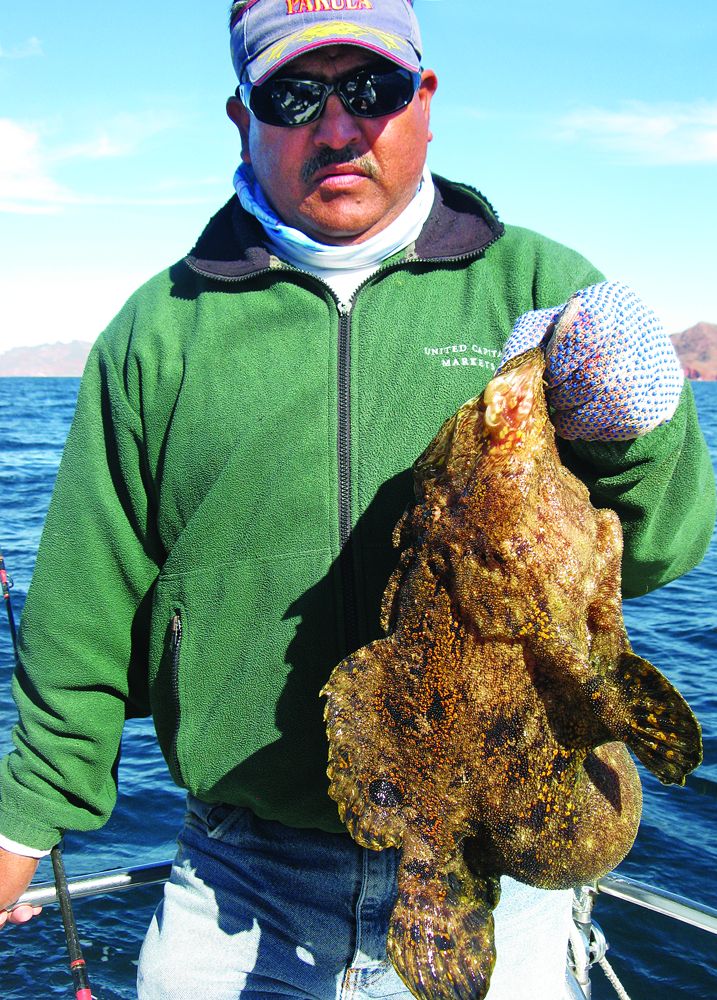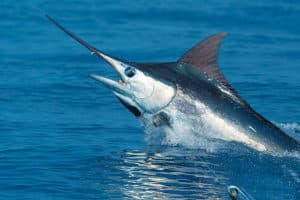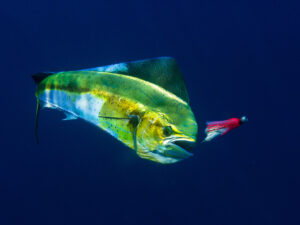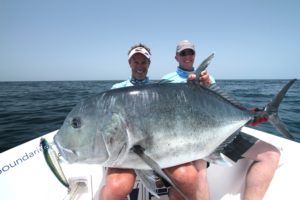In each issue of Sport Fishing magazine, a panel of five international expert ichthyologists identifies unusual and often amazing fishes in photos submitted by readers. Find out what they are and learn fascinating facts about them.
Up Came a Slimehead
QUESTION:
Fishing off Key Largo, Florida, in 425 feet of water, Jake Dillon caught this fish. We deep-drop often, but we couldn’t find this species (which had very sharp belly scales) in any of our reference books.
Robert Dillon
Tavernier, Florida
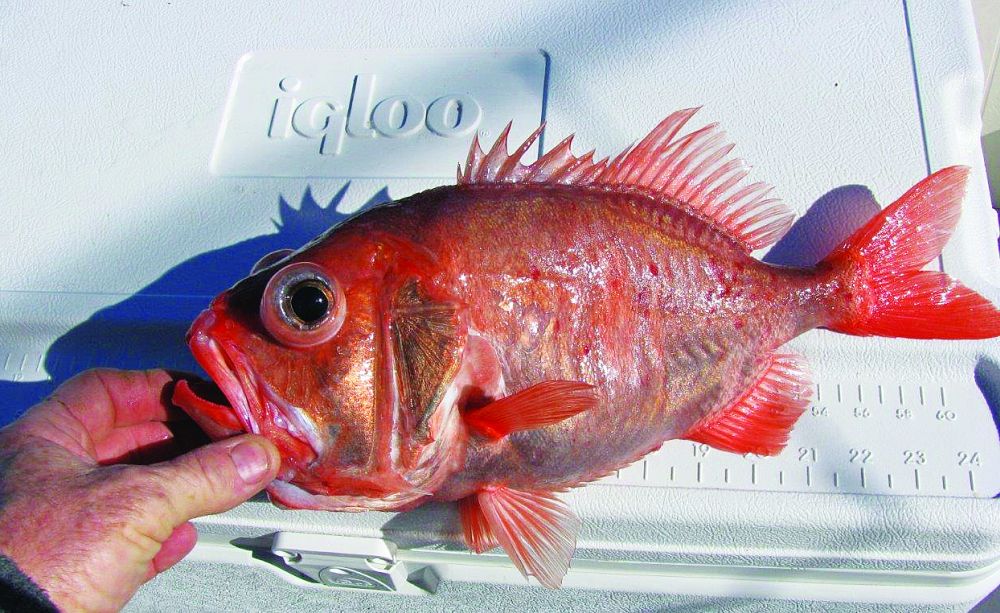
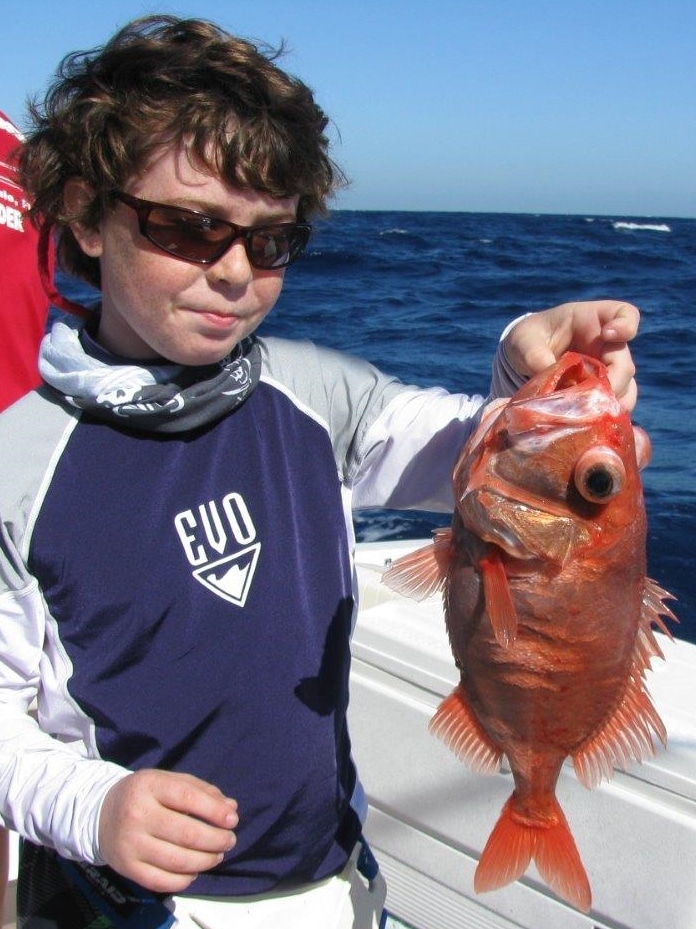
ANSWER:
Jake caught a member of the family Trachichthyidae, often referred to as slimeheads or roughies. They’re closely related to the squirrelfishes common at shallower depths. Based on the number and arrangement of dorsal spines, it’s likely a Darwin’s slimehead, Gephyroberyx darwinii. In the western Atlantic, this species is known from the shelves and upper slopes of Canada and the United States’ East Coast to the Gulf of Mexico and the Caribbean, in 240 to 2,100 feet of water. It’s also been reported in the eastern Atlantic and Indo-Pacific. Like its better-known cousin, the orange roughy, the slimehead is an excellent food fish. The IGFA all-tackle-world-record slimehead, by the way, is held by a 7½-pound fish caught off Virginia in 2008.
— Ray Waldner
He Nose It’s an Emperor
QUESTION:
My wife and I were fishing a reef off Taha’a in French Polynesia and caught this fish on a white bucktail in about 20 feet of water. Our guide, a local, knew the name in Polynesian (which I can’t remember) but not in English. Can you help me identify it?
Tim Huyck
Amherst, New Hampshire
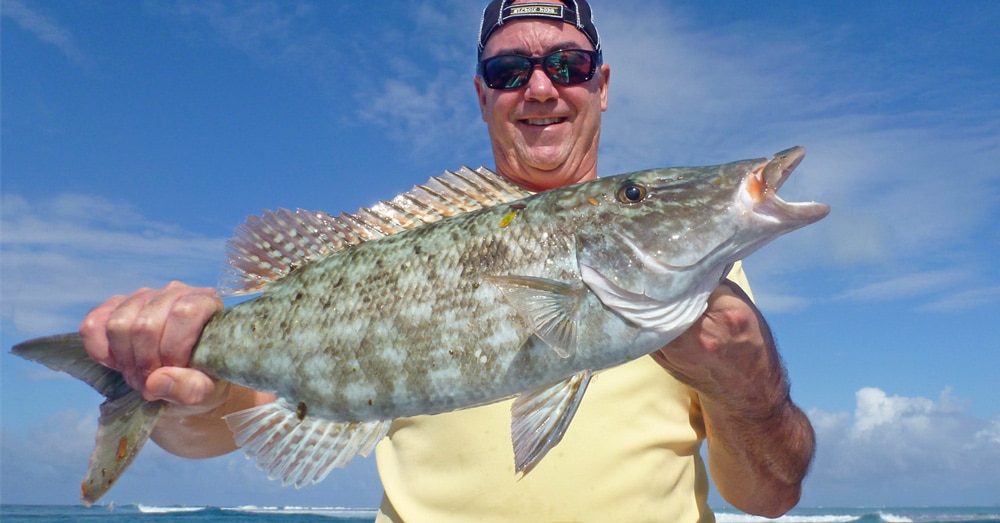
ANSWER:
Hi, Tim. The English name for that fish is longnose emperor (Lethrinus olivaceus). This species is occasionally encountered by anglers fishing on coral reefs throughout the Indo-West Pacific region. Also known as longface emperor, it’s the largest member of the family Lethrinidae, growing to more than 40 inches long and weighing up to 30 pounds or so. The IGFA all-tackle record is 22 pounds, 13 ounces, caught off Japan.
Longnose emperors are easily distinguished from all other emperors by their distinctive head, with its long, pointed “nose.” Coloration is olive-green dorsally, with mottled blotches fading to creamy white ventrally. Juveniles, such as the one you caught, are found over sandy areas and patch reefs in shallow lagoons less than 30 feet deep, often in large schools. However, adults are usually solitary and are found in deeper waters on offshore reefs and along deep coral drop-offs to depths of 500 feet. Like other lethrinids, longnose emperors feed mainly on crustaceans, mollusks (including squid) and smaller fish. Sexes appear to be separate throughout their lives, and both males and females mature at 15 to 16 inches long (4 to 5 years old). In equatorial regions, these fish spawn monthly on new-moon periods, but in more temperate parts of their range — such as along the Great Barrier Reef — spawning is restricted to the spring months. This is a long-lived species, and because of this, the largest longnose emperors have gained a reputation for being ciguatoxic in places like New Caledonia.
— Ben Diggles
ID Hits the Bull’s-eye
QUESTION:
I’m hoping you can help ID this shark that we caught off Islamorada, Florida. Is it a bull? The pectoral and dorsal fins overlap, so that’s what I’m guessing. We don’t catch all that many sharks, so I’m not sure on the species.
Dennis Fonseca
Miami, Florida
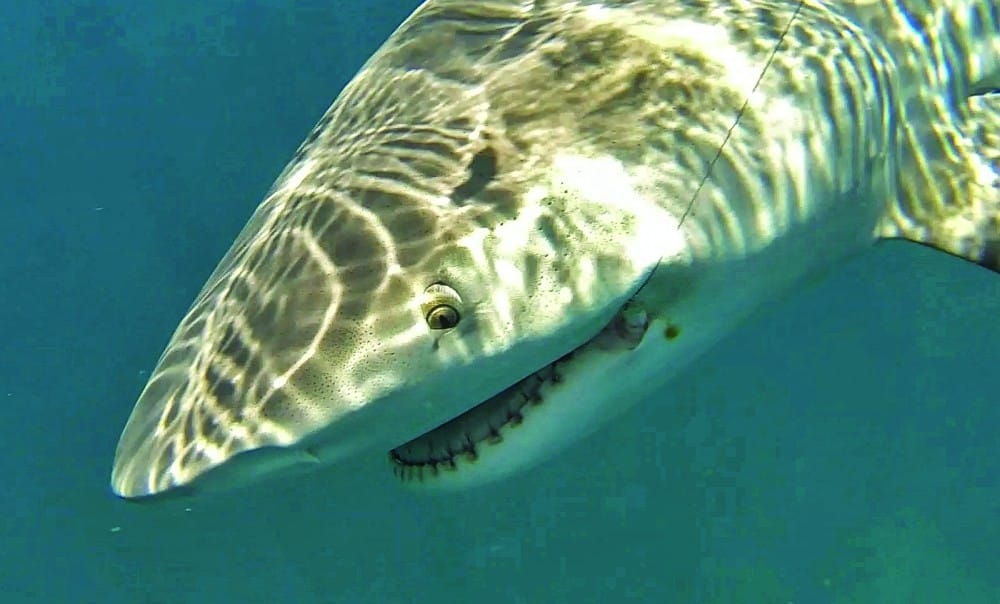
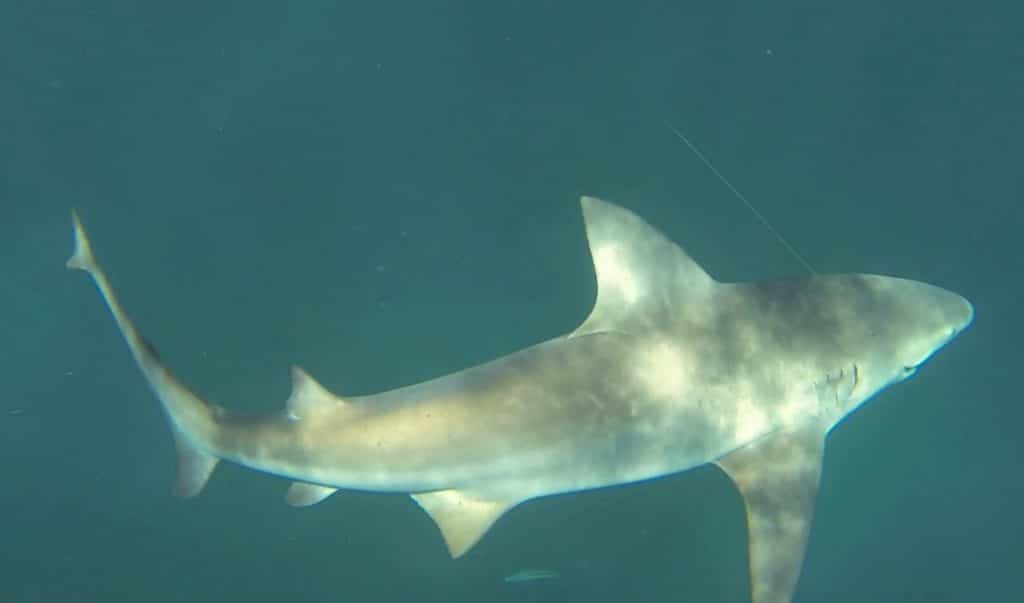
ANSWER:
Be glad you were in a boat when you took those photos, Dennis. Although sharks are far from the mindless killing machines they are sometimes portrayed as being, you did catch a potentially dangerous species. As you suggested, it’s a bull shark, Carcharhinus leucas. I’m basing this ID on the relative position of the shark’s dorsal and pectoral fins, the lack of a ridge between its dorsal fins, and the convex shape of the leading edge of its first dorsal fin. Its relatively tall dorsal fin; short, broad snout; and small eyes are also characteristics of bull sharks. Bull sharks are found worldwide in warm waters, and may enter brackish and even fresh water; the Lake Nicaragua shark of South America and Zambezi River shark of Africa are, in actuality, bull sharks. Bull sharks are reputed to have the highest testosterone levels of any animal, and some shark researchers consider the bull shark to be the most dangerous shark species. Bulls can reach lengths approaching 12 feet and weigh well over 700 pounds.
— Ray Waldner
Mystery Tuna
QUESTION:
I work on an oil tanker and, while fishing in the Gulf of Mexico about 200 miles offshore, caught these two tunas among others in several thousand feet of water, but of course, in the upper water column. One of the tunas here is clearly a yellowfin; can you please help us identify the other?
Russ Firtel
Miami, Florida
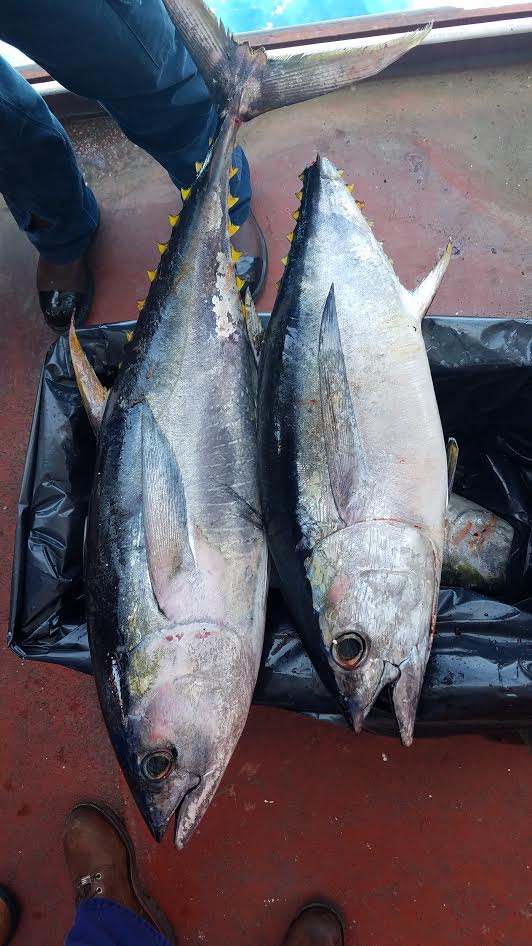
ANSWER:
I’m pretty sure you caught a true albacore. (“True” distinguishes this from a false albacore, as the smaller little tunny is often labeled.) Unfortunately, the caudal fin is missing, so I can’t rely on one of the key characteristics for identification: Albacore are the only tuna that have a thin white band at the exterior margin of the caudal fin. Four tuna suspects in the Gulf sport long pectorals: yellowfin, bigeye, blackfin and albacore. But the pectorals on this fish are clearly far too long for either yellowfin or bigeye, and really pushing it for blackfin. Also, blackfin and yellowfin have a patterning of bands and spots on the lower sides that this fish lacks. Note too the large eye size of the mystery fish. That also excludes blackfin and yellowfin, which pretty much leaves albacore.
Albacore are not as common as some of the other tunas in the Gulf of Mexico, but they aren’t strangers. Not targeted, they’re often an incidental catch for commercial fishermen pursuing bigeye. In general, albacore prefer oceanic (deep blue) waters. They typically don’t spend much time over the continental shelf, which is why most recreational catches come near the canyons off the edge. Another reason for infrequent recreational catches of albacore in the Gulf: The species really doesn’t like warm water, and the Gulf gets awfully warm in the summer. Albacore would be down deep in cooler waters, not generally available to rec gear.
— John Graves
Bantam Barracuda
QUESTION:
We recently fished eastern Panama, where we caught this small barracuda. We catch lots of baby ’cudas back home. Those are all great barracuda, I believe, but I have no clue what species this might be, where it’s generally found or how large it gets. Can you enlighten me?
Myron Bumbleschmetter
Englewood, Florida
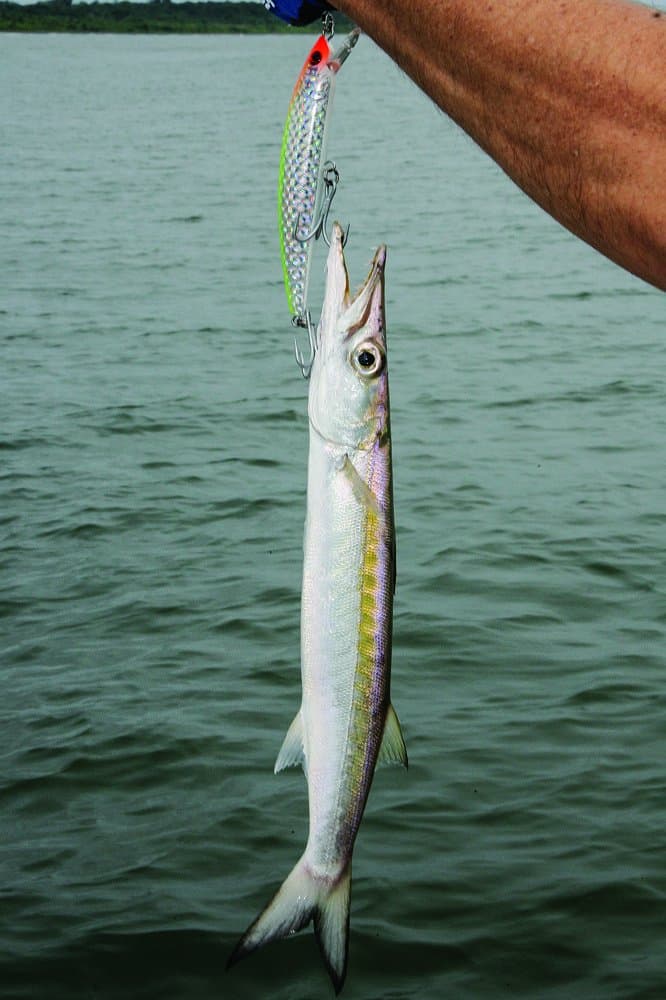
ANSWER:
Although I can’t clearly see the relative positions of the fish’s dorsal and pelvic fins in the photograph, I’m fairly certain that it’s a guaguanche (also called guachanche), Sphyraena guachancho, Myron. In the western Atlantic, this small barracuda (growing to 2 feet long) ranges from Massachusetts through Brazil, including the Caribbean Sea. Small barracuda species such as the guaguanche and southern sennet, S. picudilla, can be excellent table fare but have also been known to cause ciguatera poisoning. The guaguanche prefers somewhat turbid inshore areas with muddy bottoms, but has been reported from depths of over 300 feet.
— Ray Waldner
From the Fish Facts Archives
GULF FLOUNDER (Paralichthys albigutta)
The gulf flounder is a popular target for recreational and commercial fishermen from the Carolinas south into and throughout the Gulf of Mexico. As Fish Facts expert Bob Shipp notes in his Guide to the Fishes of the Gulf of Mexico, like most flatfishes`, the gulf flounder is a voracious ambush predator, lying in wait while hidden on the bottom. The IGFA all-tackle world record — from Bogue Sound, North Carolina, in 2011 — weighed 7 pounds, 2 ounces.
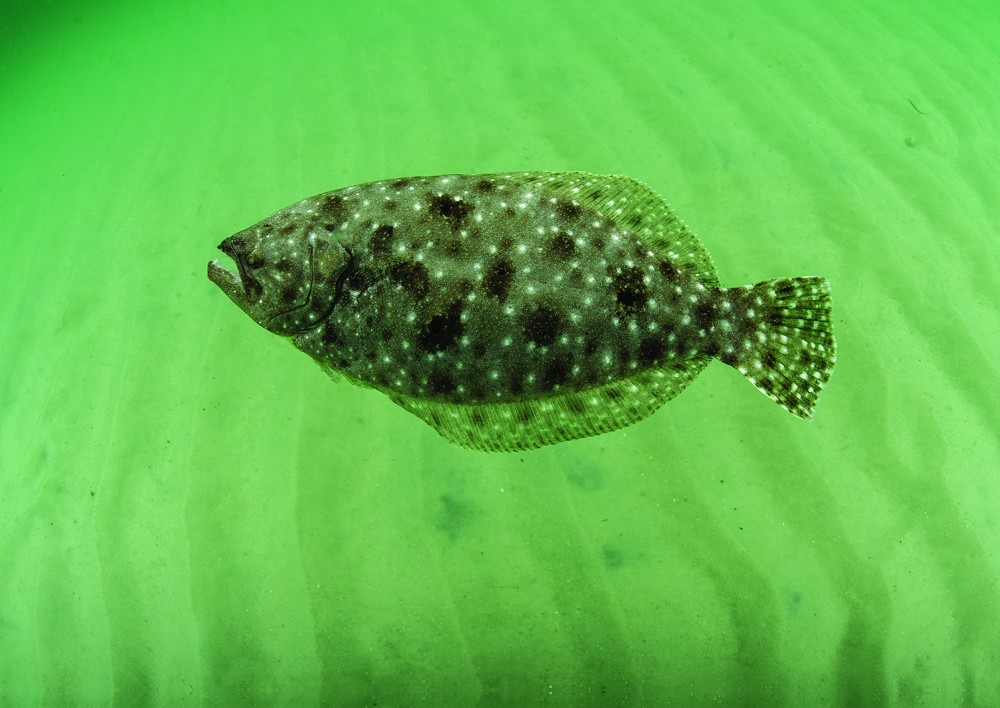
Sport Fishing‘s Prestigious International Panel of Experts
Northeast
Mike Fahay, Sandy Hook Marine Lab, New Jersey
Southeast
Ray Waldner, Ph.D., Palm Beach Atlantic University, Florida
Gulf of Mexico
Bob Shipp, Ph.D., University of South Alabama
West Coast
Milton Love, Ph.D., UCSB, California
Far Pacific
Ben Diggles, Ph.D., Queensland, Australia
Bluewater Pelagics
John Graves, Ph.D., Virginia Institute of Marine Science
CHALLENGE OUR EXPERTS (And Win Up to 10,800 Yards of Line!)

Send in your question and any relevant photos of your mysterious catch or observation for our experts’ ID and feedback. If we publish your question and you have a shipping address within the United States or Canada, you’ll win a 3‑pound spool of Berkley Pro Spec ocean-blue or fluorescent-yellow monofilament (1,000 to 10,800 yards, depending on line strength) or a 1,500‑yard spool of Spiderwire Stealth braid up to 100‑pound‑test! Send questions and images via email to fishfacts@sportfishing.com (include your hometown) or via post to Sport Fishing Fish Facts, 460 N. Orlando Ave., Suite 200, Winter Park, FL 32789.
